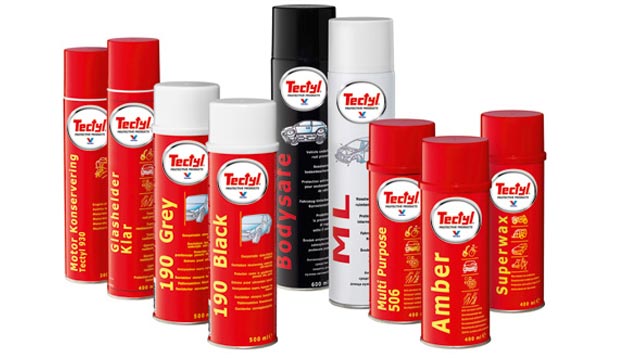
Movil or tektil. What's better?
The essence and history of rivalry
Movil, known since Soviet times, is a bituminous mastic developed jointly by scientists from Moscow and Vilnius. Some motorists claim, however, that the current Movil is not at all like “that one”. But, at least, the external similarity remains: both “that” and “that” Movili are a viscous paste that must be applied to problem areas of the car manually, with a brush.
Tektil was developed and produced in Holland. The history of its success begins at the end of the last century, it is ensured by the ease of application (both concentrate and spray can be used), as well as the presence of special additives that not only protect the car metal from the development of corrosion processes, but also preserve the quality of the original zinc coating.


Compare the main characteristics
The main task of any anticorrosive agent is to ensure the long-term presence of a protective film layer on the surface of steel parts, which would have corrosion resistance and mechanical strength. At the same time, important qualities are also:
- Ease of application.
- Coating uniformity.
- Temperature resistance of the film.
- electrochemical neutrality.
- Hygienic characteristics.
Movil, although it dries longer (and during drying it also does not emit a pleasant smell for everyone), is quite competitive in all of the above parameters with tektil. But! Movil, judging by the reviews, is very capricious about the technology of its application. Despite the temptation to immediately apply a thick (up to 1,5 ... .2 mm) layer, this should not be done. On the contrary, Movil must be applied in thin layers of approximately 0,5 mm, wait for complete drying, and then repeat the procedure. The resulting layer is elastic, and well resists both thermal and mechanical shocks.


Tektil is chemically more active: when it is sprayed, the necessary chemical adhesion of the substance molecules to the metal surface immediately occurs. Since the dispersion of the flow is quite fine, the uniformity of the layer is high, which guarantees its durability. However, only mechanical! Tektil will not provide resistance to temperature changes. Therefore, during a period of long-term temperature changes, tektile supporters have to remove the old film of the composition, degrease the surface, and apply a new layer.
Summing up
Movil or tektil - which is better? The answer is determined by the operating conditions of the car and its model. If the intensity of use of the vehicle is the same throughout the year, and the owner has the opportunity to spend more time on anti-corrosion treatment of the car, then, given the financial side of the issue, Movil should be preferred.


With the periodic use of the car (for example, during its winter preservation), many, not without reason, will prefer tektil.
The design of the car itself is also important. In particular, in the absence of mudguards, it is not advisable to use Movil: on heavy sections of roads, gravel and crushed stone completely rip off even a multilayer film of this substance. Movil is also good when rust appeared only in small areas - by applying anticorrosive over these zones, the corrosion process can be stopped.
In other situations - a complex body configuration, an "aggressive" way of driving a car, the price of anticorrosive does not matter - tektil is better.


Watch this video on YouTube
